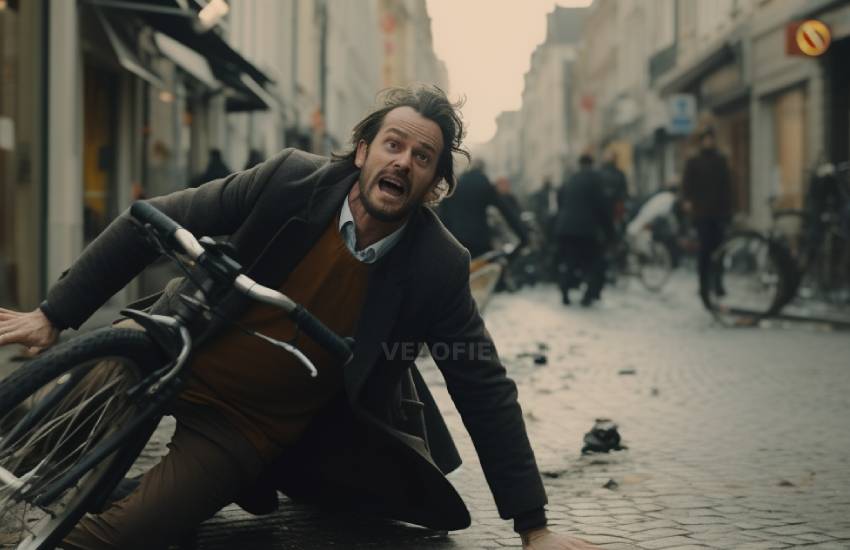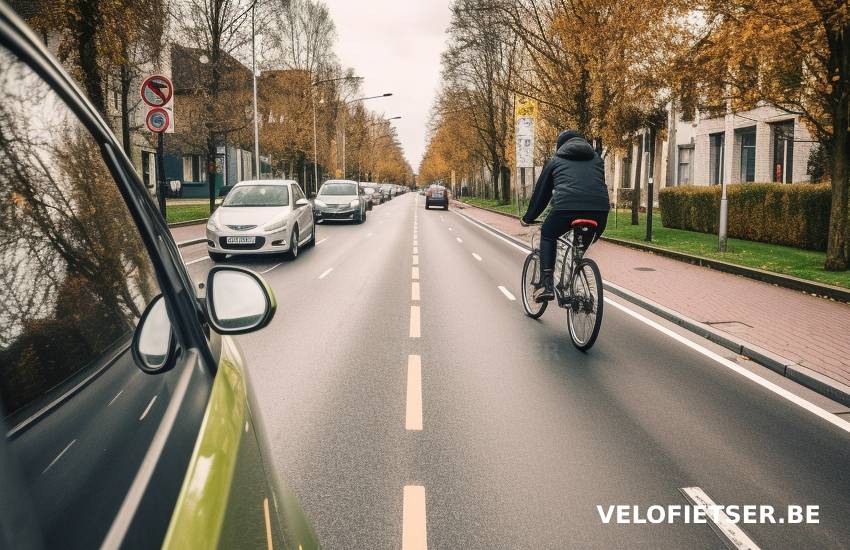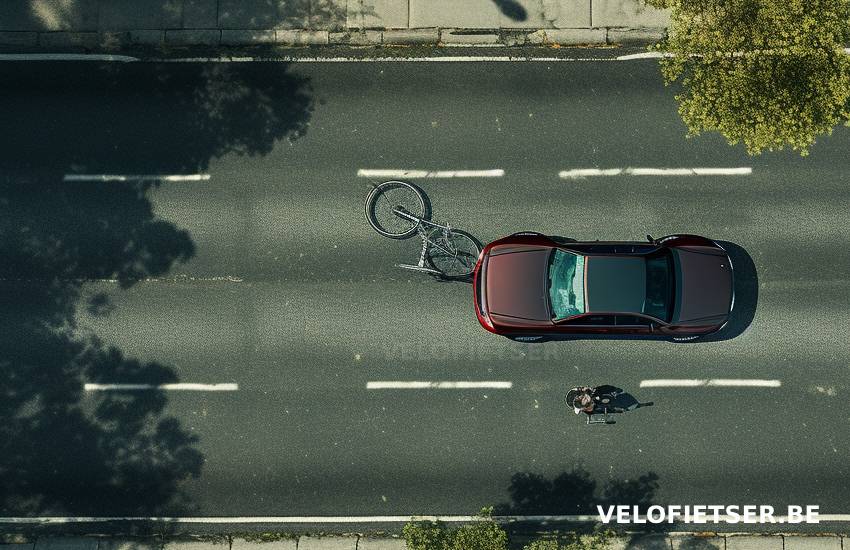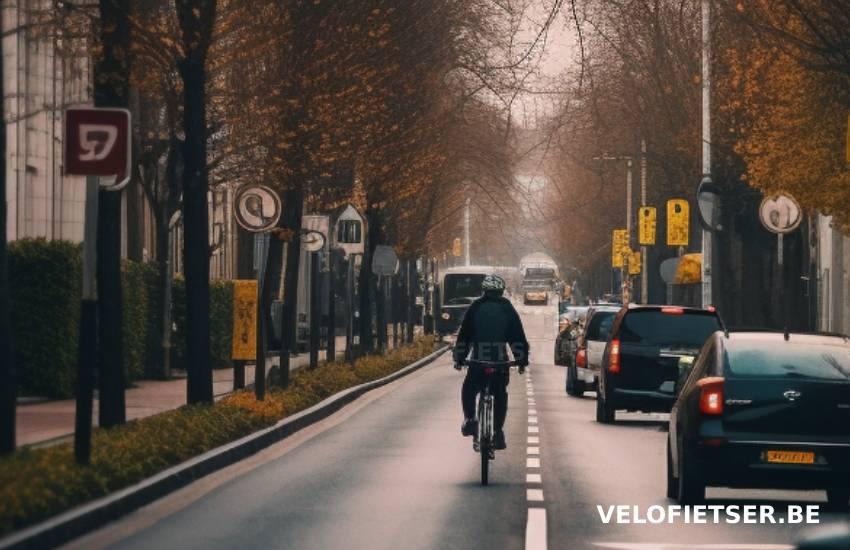Quick search
In the heart of Europe lies Belgium, a country known for its chocolate, beer, and increasingly, its cycling culture. But how safe is it to cycle on Belgian streets? In our opinion, the infrastructure could be (much) better, although we are pleased that efforts are being made to improve it.
Let’s describe the recent statistics and trends regarding cycling safety in Belgium and Europe.
The European Context
According to the European Commission, cyclists and pedestrians are the most vulnerable road users. In 2019, cyclists accounted for 8% of all road traffic deaths in the EU.
While the total number of road traffic deaths in the EU decreased by 24% between 2010 and 2019, the number of cyclist deaths in that same period decreased by only 5%. This indicates an urgent need for improved safety measures for cyclists at the European level.
Cycling Statistics
The overall traffic safety has seen improvements over the years, but this does not apply to cyclists. These following stats are for Belgium only. But show the trend of European countries adopting the e-bikes.
In 2022, more than 100 cyclists died within 30 days after a traffic accident. This is a figure that has not been this high since 2010. This is all the more concerning given that the total number of traffic deaths in Belgium increased by 8% in 2022 compared to 2021.
This increase can partly be attributed to the fact that there are more cyclists on the road, but the number of accidents is still disproportionately high.
Additionally, most fatal accidents involve cyclists over 50 years old, with 37% of the victims being 70 years old or older. Many of these accidents involved electric bikes.

Electric Bikes: A Blessing with Drawbacks
Electric bikes have revolutionized the way we commute. They provide a great way to travel quickly and with minimal effort. Elderly individuals, those with physical limitations, and commuters carrying heavier loads can now bike just as easily. There is more opportunity to be outdoors.
All of this comes with an increase in risk. In the statistics for electric bikes in Belgium, we see the same trend as in Europe. Nearly half of the cyclist fatalities (46%) were over 65 years old, and almost 4 out of 10 cyclists (39%) were riding an electric bike at the time of the accident.
Accidents involving electric bikes are more severe than those involving regular bikes, with 11 fatalities per 1000 accidents for electric bikes compared to 7 fatalities per 1000 accidents for traditional bikes.
E-Scooters: A Surge in Accidents
In addition to bicycles, we also see an increase in the use of e-scooters. They too deserve their own category; accidents involving electric scooters in Belgium. In 2022, there were 1715 injury accidents involving e-scooters, or 5 per day. This is an increase of 63% compared to the previous year.
While e-scooters offer a convenient mode of transportation, especially in urban areas, they also bring new safety challenges. In Brussels, accidents involving e-scooters account for about 1 in 6 injury accidents (18%).
Differences in Cycling Between Flanders, Wallonia, and Brussels
In Flanders, the number of traffic fatalities decreased by 7%, while an increase was observed in Wallonia and Brussels. In Brussels, the number of fatalities increased from 6 to 21, the highest number since 2018.

Relevant Bike Statistics in Europe:
- European Commission
- Cyclists accounted for 8% of all traffic fatalities in the EU in 2019.
- The number of traffic fatalities in the EU decreased by 24% between 2010 and 2019, but the number of cyclist fatalities decreased by only 5%.
- Cyclists and pedestrians are the most vulnerable road users.
- In 2019, cyclists accounted for 8% of all traffic fatalities in the EU.
Historical numbers for cycling deaths in Europe
Trend Over the Years:
-
- 1991: 7,845 deaths
- 2001: 5,632 deaths
- 2011: 2,495 deaths
- 2021: 1,932 deaths
Age Groups:
-
- Under 14 years: 3% of deaths
- 15-17 years: 2% of deaths
- 18-24 years: 8% of deaths
- 25-49 years: 32% of deaths
- 50-64 years: 27% of deaths
- 65 years and older: 28% of deaths
Gender:
-
- Men: 75% of deaths
- Women: 25% of deaths
Urban vs. Rural:
-
- Urban areas: 58% of deaths
- Rural areas: 42% of deaths
Helmet Usage:
-
- 21% of fatally injured cyclists were wearing a helmet.
Involvement of Alcohol:
-
- 25% of fatally injured cyclists had a blood alcohol concentration (BAC) above the legal limit.
Time of Day:
-
- Daytime (6:00 AM – 9:59 PM): 80% of deaths
- Nighttime (10:00 PM – 5:59 AM): 20% of deaths
Distribution by Month:
-
- January: 6%
- February: 5%
- March: 7%
- April: 8%
- May: 9%
- June: 9%
- July: 9%
- August: 8%
- September: 9%
- October: 9%
- November: 7%
- December: 6%
These statistics provide a comprehensive overview of cyclist fatalities in the EU, taking into account various factors such as age, gender, location, helmet usage, involvement of alcohol, and time of occurrence.

Our Opinion on These Cycling Statistics
Belgium faces a challenge when it comes to the safety of cyclists and other vulnerable road users. While the popularity of cycling and personal electric modes of transport continues to grow, policymakers and citizens must work together to ensure that the roads remain safe for everyone.
On one hand, the issue is the infrastructure. Roads are dominated by cars, leaving little space for cyclists. This is not the fault of the car driver or politicians; it’s our history. Our policymakers are aware of this, but Belgian politics tends to progress (VERY SLOWLY).

It’s time to take action and ensure that cycling in Belgium is safe. We need more infrastructure, away from cars. More guidelines on bike lights and clarity on the need for reflectors.
And more benefits for those who make the effort to give up their car for the greater good. Those car drivers who always curse at cyclists don’t seem to understand that they have less traffic jams because of us.

